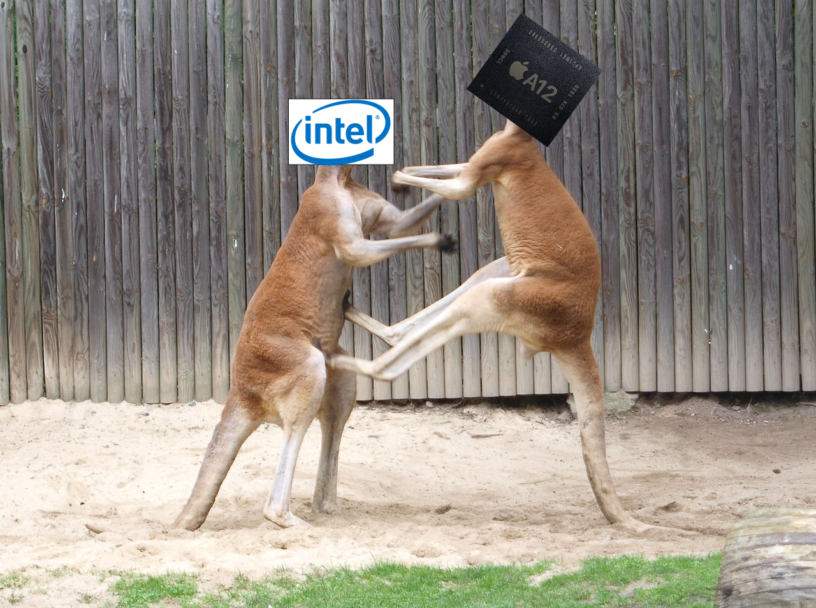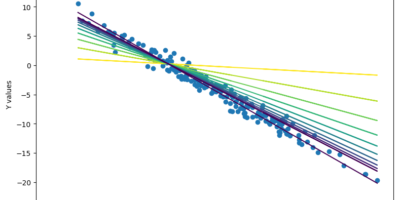At Apple’s World Wide Developer Conference (WWDC) on June 22, Apple announced that they were moving away from using Intel chips in their Mac computers. In a couple of years, the entire Mac product line will use Apple-designed processors using the ARM instruction set, much like present-day iPhones and iPads. Apple, curiously, did not mention ARM in their press release, simply announcing a transition to “Apple Silicon”.
This is not the first foundational change for the Mac platform. In fact, according to Tim Cook this was the Mac’s fourth major transition, the others being:
- From Motorola to PowerPC processors
- From Classic Mac OS to the modern, Unix-based Mac OS (X)
- From PowerPC to Intel processors
Apple also announced new versions of iOS and MacOS with new features, but let’s focus on this transition to Apple Silicon for a bit.
Getting Technical
| Device | OS | Processor Design |
Instruction Set |
|---|---|---|---|
| Current Mac | MacOS | Intel | x86_64 |
| Future Mac | MacOS | Apple | ARM |
| iPhone | iOS | Apple | ARM |
| Typical Android | Android | Samsung or Qualcomm |
ARM |
| Typical PC | Windows | Intel or AMD | x86_64 |
| Surface Pro X | Windows | Qualcomm | ARM |
A processor is a physical chip inside a computer. An instruction set is the language a processor understands. Modern Intel & AMD processors use the x86_64 instruction set, which is compatible with the older x86 instruction set. Modern mobile devices, whether running Android or iOS, have processors using the ARM instruction set. Apple has been designing its own processors using the ARM instruction set for many years now, but the Mac still uses Intel’s processors with the x86_64 instruction sets.
Changing instruction sets is a lot of work. Apple doesn’t just need to port MacOS from x86_64 to ARM: they also need developers of Mac apps to follow them. However, Apple has done it before.
During the PowerPC to Intel transition, Apple released tools for creating “Universal” binaries that could run on both PowerPC and Intel, as well as a “Rosetta” emulator to run PowerPC Mac apps on Intel Macs. The tradition continues today: there will be “Universal 2” binaries that run on both Intel Macs and Macs with Apple Silicon. A tool called “Rosetta 2” will allow apps for Intel Macs to run on the new Macs without any modification. Rosetta 2 can translate x86_64 apps to ARM when such apps are first installed. Some applications, such as those written in Java or JavaScript, generate x86_64 code Just In Time (JIT) to be used, and Rosetta 2 will translate those to ARM when they run.
Apple is including a new virtualization layer to run ARM versions of Linux as virtual machines, and ARM versions of Docker. They are patching major open-source projects such as Chromium and NodeJS so that they can run on the new Macs.
Additionally, Apple is releasing a “Developer Transition Kit”: it looks like a Mac Mini on the outside, but has an iPad’s processor on the inside, and developers can rent one for 500 USD if they want to test Mac apps for ARM immediately. However supplies are limited, and developers will need to fill out an application form.
Will Users Notice?

Image Credit: Apple and Pear Australia Ltd via Flickr
The first Macs with Apple Silicon will be released at the end of the year, and they will take two years to conquer the entire Mac product line. However, while this is obviously a big deal for developers, will anyone else notice?
Macs with Apple Silicon will have a massive new feature: the ability to run iOS (and iPad OS) apps natively. Every currently-existing iPhone and iPad app will be available on the Mac App Store for the new, ARM-based Macs. This is a big deal for developers and casual users alike.
Apple claims that their processors have higher “performance per watt” than Intel’s offerings, so the new Macs may have significantly improved battery life or performance. If performance tests are to be believed, Apple’s processors may already be competitive with the Intel processors used in Mac laptops. It is in the less constrained desktop space where Apple’s processor teams will really have to prove themselves.
Microsoft and Adobe have already been testing Office and Creative Cloud for Macs running Apple silicon.
Conspicuously absent from the announcements is any mention of running Windows on a Mac, which is currently a widespread practice. ARM versions of Linux are common enough, and several ARM-based Windows devices have been released over the years. However very few Windows apps are ARM-compatible, which was a problem for Microsoft’s most recent foray into ARM-based computers, the Surface Pro X. Days after WWDC started, it became clear that Windows will not be compatible with Macs using Apple Silicon.
Currently existing Intel-based Macs will be supported for a while, and Apple still has some more Intel-based machines to release.
The Bigger Picture
Although the transition away from Intel was only announced this week, it has been predicted time and again for many years.
Apple is famous for trying to control every minor detail of its products, inspiring both admiration and dread. Using Intel processors on the Mac was a massive gap in Apple’s control, but tolerable given Intel’s longstanding performance lead over its rivals. That lead has been shrinking over the past couple of years, and Apple is not the only company trying to jump ship. The aforementioned Surface Pro X was one such attempt by Microsoft, and Google has also been hiring chip designers.
Apple benefits strategically from designing its own processors instead of relying on other companies. For instance in the ARM space, Apple develops new processors for markets that Qualcomm has long abandoned, such as the smartphone market. While Apple and Samsung smartwatches get faster every year, most other companies rely on Qualcomm for smartwatch processors, despite the fact that Qualcomm has not upgraded their smartwatch processors in years. In the future, if Intel ever decides to abandon an entire market segment, Apple won’t suffer for it.
It is estimated that Apple’s transition to ARM will cost Intel 3 billion USD annually, which is 4% of Intel’s revenue. The Mac’s transition is a symbolic defeat for Intel, but not a lethal one.
References
- Ars Technica
- Apple Newsroom
- The Register
- The Verge





Leave a Reply